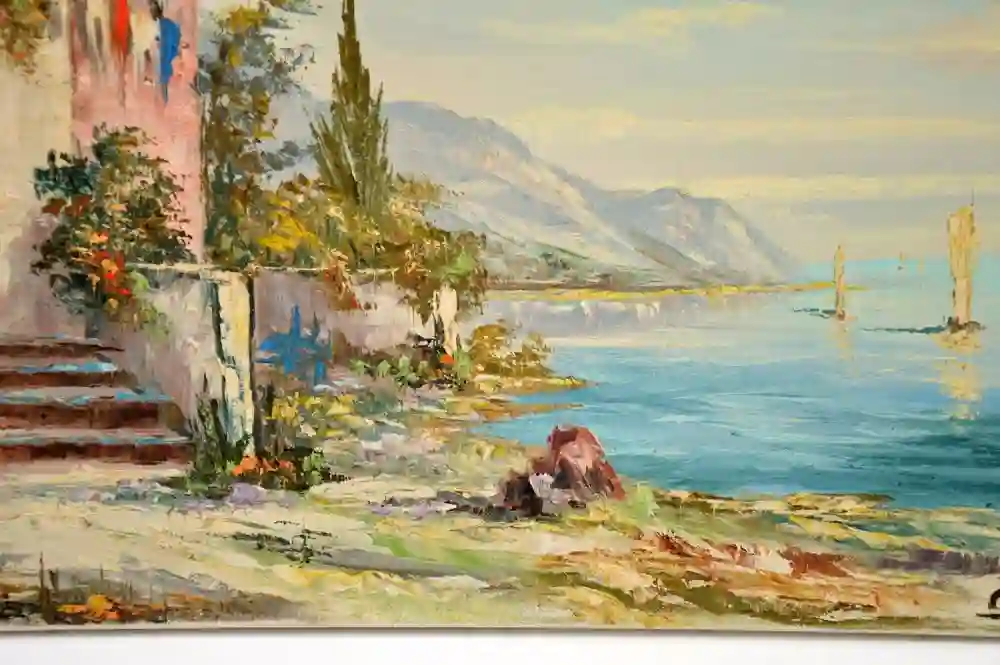
Exploring Abstraction: Pushing the Boundaries of Reality in Oils
- Lifestyles
- December 19, 2023
- No Comment
- 1121
In the world of visual art, abstraction is a compelling and liberating approach that allows artists to break free from the confines of literal representation and delve into the realm of imagination and emotion. Oil painting, with its rich and versatile qualities, provides a perfect canvas for artists to explore abstraction and push the boundaries of reality. In this article, we will embark on a journey into the world of abstract oil painting, examining its origins, techniques, and the profound impact it has on the artist and viewer alike.
Origins of Abstract Art
Abstract art has its roots in the early 20th century, a time when artists began to challenge the traditional notions of representation in art. Pioneers like Wassily Kandinsky and Kazimir Malevich sought to express the inner world of emotions, thoughts, and spirituality through non-representational forms and colors.
Kandinsky, often considered one of the fathers of abstract art, believed that color and form could convey pure, universal emotions and experiences. He saw abstract art as a means of transcending the limitations of the material world and connecting with the spiritual.
The Essence of Abstraction
At its core, abstraction is about distilling the essence of a subject, emotion, or concept into its most fundamental elements. It’s the art of simplification, reduction, and amplification. In abstract oil painting, artists translate their thoughts, feelings, or observations into a visual language of color, shape, texture, and composition.
Rather than depicting recognizable objects or scenes, abstract artists aim to evoke a response or spark a dialogue through the manipulation of these elements. The beauty of abstraction lies in its ability to communicate on a deeper, intuitive level, inviting viewers to interpret and connect with the artwork in their unique way.
Techniques of Abstract Oil Painting
Creating abstract oil paintings involves a wide range of techniques that allow artists to experiment, explore, and express themselves freely. Some key techniques include:
- Gesture and Movement: Artists often use spontaneous, gestural brushwork to convey energy and movement in their abstract compositions. The fluidity of oil paint lends itself well to capturing dynamic gestures.
- Color Harmony: Color is a powerful tool in abstract art. Artists carefully select and harmonize colors to convey mood, emotion, and symbolism. Bold, contrasting colors can create impact, while subtle, nuanced palettes can evoke introspection.
- Texture and Layering: Oil paints can be layered and manipulated to create depth and texture in abstract artworks. Artists may use palette knives, sponges, or unconventional tools to build up layers and add tactile qualities.
- Negative Space: The use of negative space—empty areas in the composition—can be just as important as the painted elements. Negative space can create balance, tension, and a sense of rhythm in abstract art.
- Intuition and Experimentation: Abstract artists often embrace intuition and spontaneity in their work. They allow themselves to explore without preconceived notions, trusting their instincts and the process of discovery.
Emotional Expression and Interpretation
One of the most profound aspects of abstract oil painting is its ability to convey complex emotions and invite interpretation. Because abstract art doesn’t dictate a specific subject or narrative, viewers are encouraged to engage with the artwork on a personal level.
A single abstract painting can evoke a wide range of emotions and thoughts in different individuals. Some may find a sense of calm and serenity in the harmonious balance of colors and shapes, while others may sense energy and excitement in the bold strokes and contrasting elements.
The Artist’s Journey
For artists, engaging in abstract oil painting can be a deeply personal and introspective journey. It often involves an exploration of one’s inner world, emotions, and creative impulses. The act of abstract painting can serve as a form of self-expression and a means of self-discovery.
Artists may find that abstract painting allows them to access emotions and ideas that are difficult to express in words or traditional representational art. It offers a space for experimentation, risk-taking, and the freedom to break away from conventions.
Viewer Engagement
Abstract oil paintings invite viewers to participate actively in the creative process. Unlike representational art, which may offer a clear narrative or subject, abstract art encourages viewers to bring their own interpretations, emotions, and experiences to the artwork.
This engagement can lead to profound connections between the viewer and the artwork. Each person may find something different in the painting, and those interpretations can be deeply personal and meaningful.
The Power of Abstraction
Abstract oil painting has the power to transcend the literal and the concrete, opening doors to new dimensions of creativity and expression. It challenges both artists and viewers to explore the boundaries of reality, to see the world in a fresh light, and to embrace the limitless possibilities of the imagination.
In conclusion
Abstract oil painting is a vibrant and transformative form of artistic expression that continues to push the boundaries of art. It invites artists to explore their inner worlds and emotions, and it engages viewers in a dynamic, interactive dialogue with the artwork. Whether you’re an artist seeking to embark on a creative journey or a viewer eager to connect with the profound language of abstraction, the world of abstract oil painting offers a realm of endless exploration and discovery.
